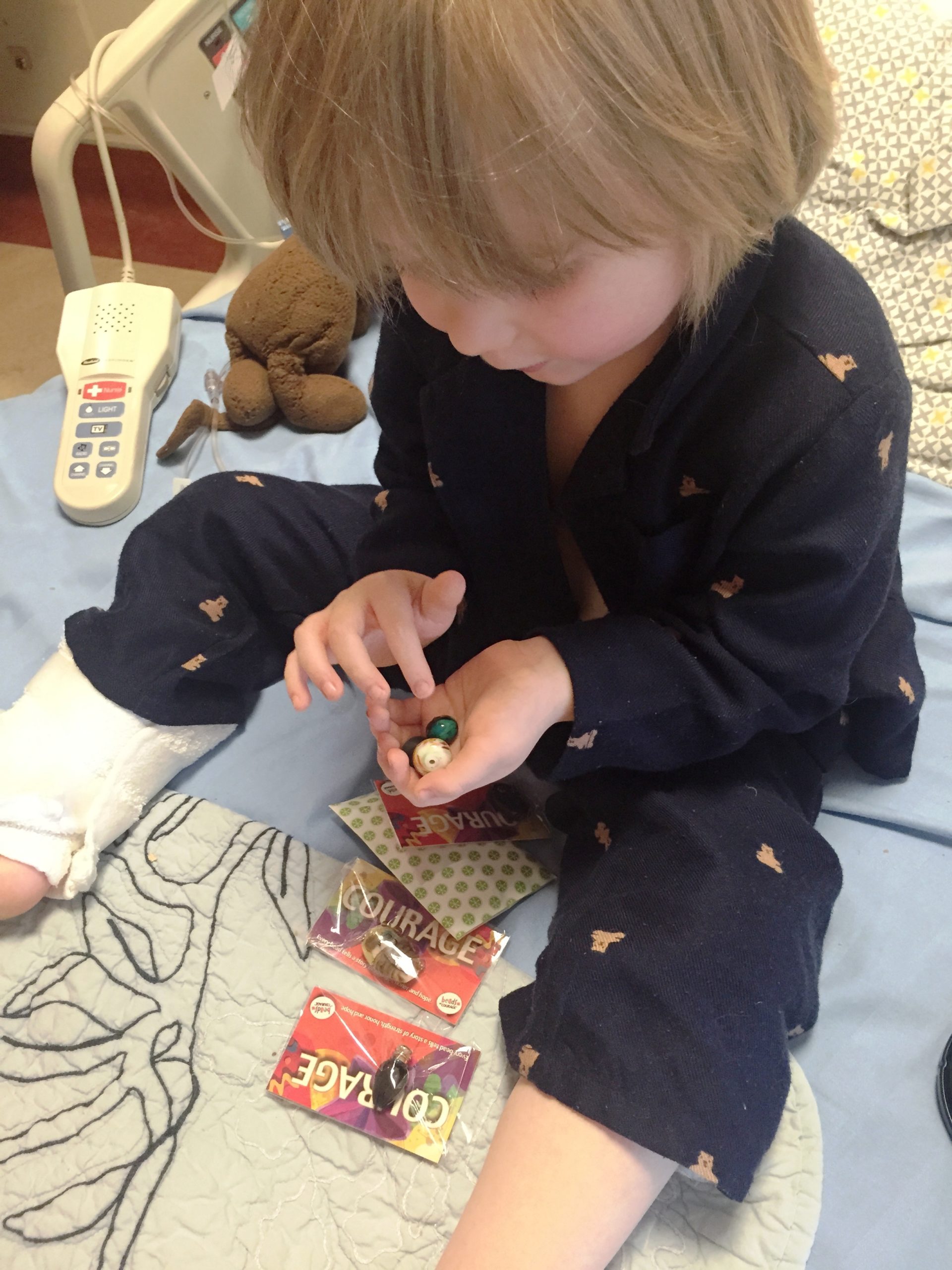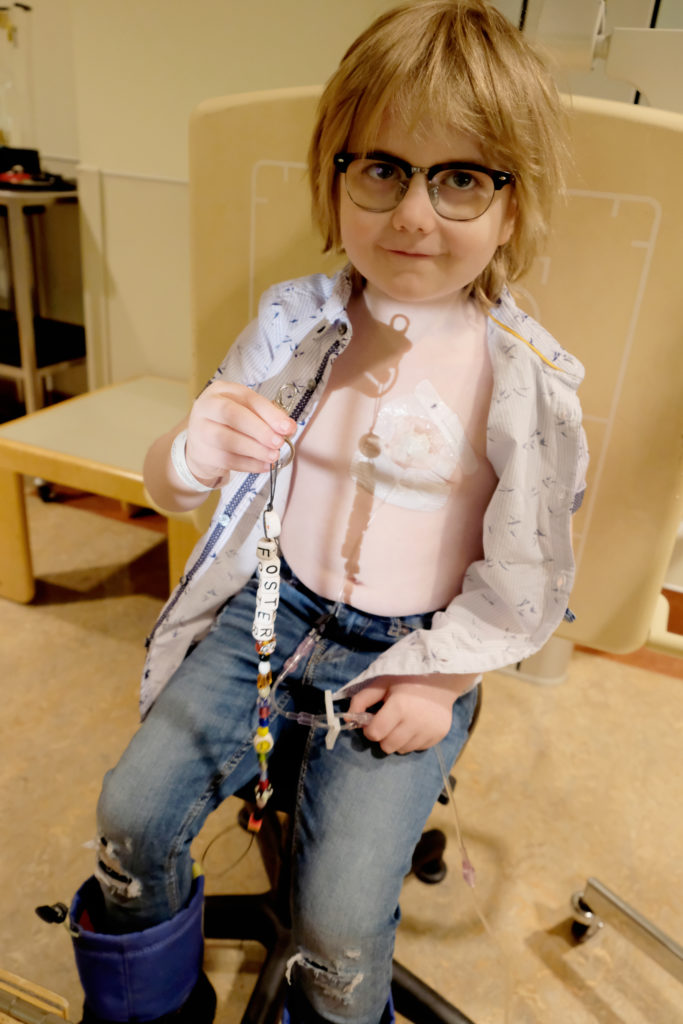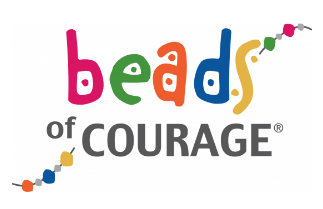“BEADS MAKE IT BETTER” – BUT WHAT DOES THAT REALLY MEAN?

Foster was diagnosed with high risk b-cell acute lymphoblastic leukemia on January 28, 2016, just after his fourth birthday. Three years later, while still undergoing cancer treatment, his mom shared a photo of Foster getting a chest x-ray with the hashtag #beadsmakeitbetter.

We reached out to Foster’s mom Candace back in 2019 to ask why she used the phrase “beads make it better.” She told us, “Foster will try his best to get through anything, knowing he will be able to get another bead! The beads really do have an immense positive impact, not only on Foster, but our entire family. When Foster has a difficult and painful ‘poke’ experience, he looks forward to choosing his Courage Bead and it helps him be strong and brave. A child life specialist comes, the tears dissipate, and smiles arrive as he carefully chooses his special bead.”
The flagship Beads of Courage arts-in-medicine program truly does transform the treatment experience for children like Foster who have been diagnosed with cancer or another life-threatening illness. Thanks to your support, we can make every day brighter for these courageous warriors with colorful beads that honor their courage, strengthen resilience, and bring the healing power of art to the bedside.
Today, at age 11, Foster is old enough to explain in his own words how Beads of Courage helped him get through the most difficult time of his young life. “Beads of Courage helped me a lot through all of the scary and painful tests and procedures. Now, since I am done with treatment, I can look at all the tests and medicines I had and they remind me I accomplished all of them and how the beads helped me through all of them. Even though I am finished with my treatment, I still have many appointments with doctors and tests for pain and other things. The beads still come with me and make me feel better.”
Foster is now in remission, but continues to cope with the long-term effects of treatment, including neuropathy, chronic pain, chronic fatigue and executive functioning.
Candace shares, “When Foster was first admitted upon diagnosis of cancer, our social worker started us with the Beads of Courage program. At that point, during the shock of diagnosis, we didn’t necessarily realize the importance of this program at the moment.
“As each day went by, the anticipation of receiving a bead for chemotherapy, antibiotics, surgery, scans, etc., was therapy in a beautiful physical form. Foster would be able to calm himself in the anticipation of a difficult procedure by knowing he would receive a bead or even pick out one himself!
“His beads got so long and delicate from all his treatment that we made a ‘travel bead string’ for him to carry to treatment and scans that were scary for him. Every time he needed encouragement and something to help him with his fears, anxiety and worry, he would bring his travel beads. Foster would tell me that the “beads make it better.”
We display his beads prominently in our home. Every day we, as a family, gaze upon the beautiful, impactful, meaningful beads. They remind us of all that we have gone through and help us see the beautiful through the darkness.”
